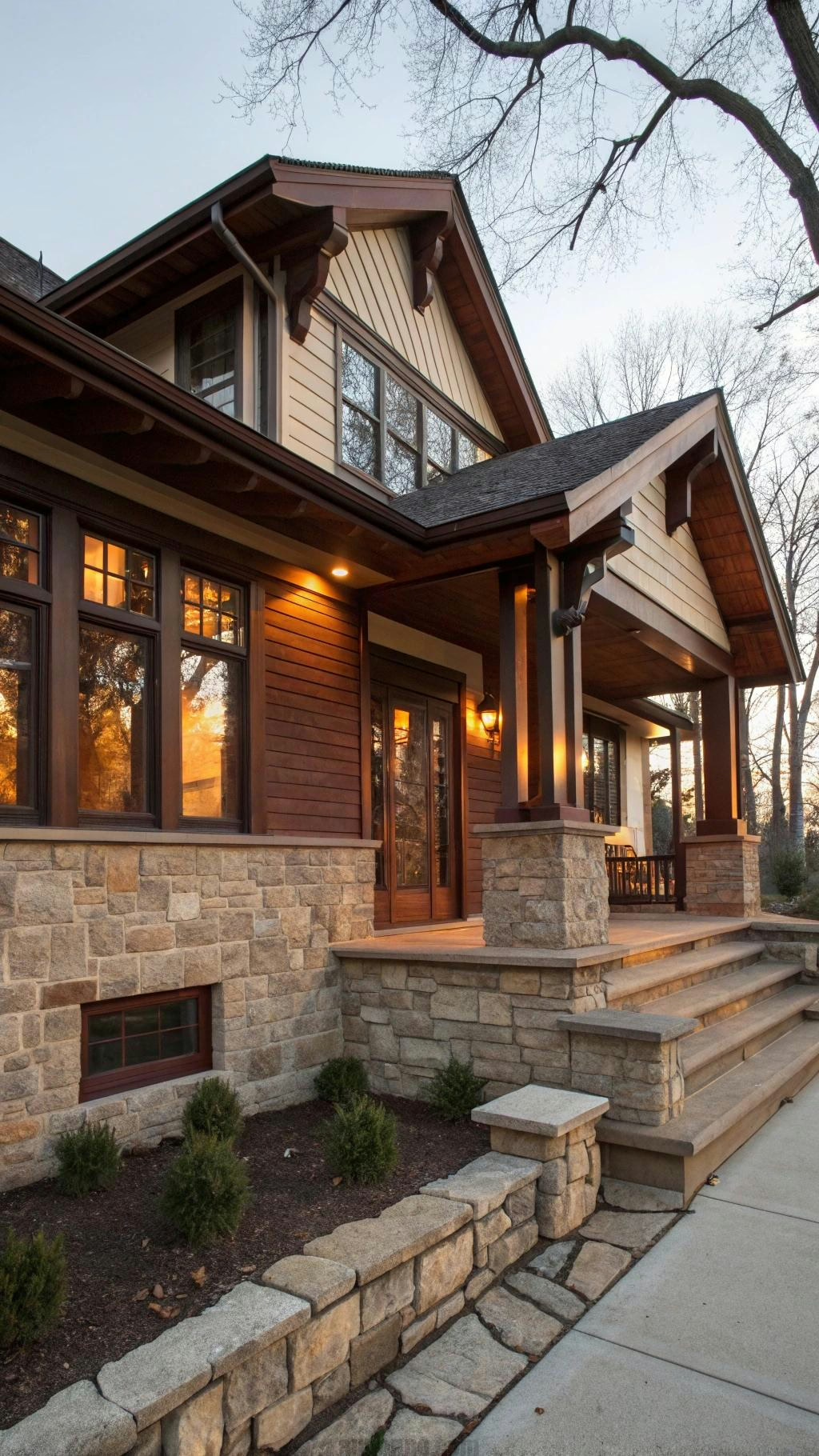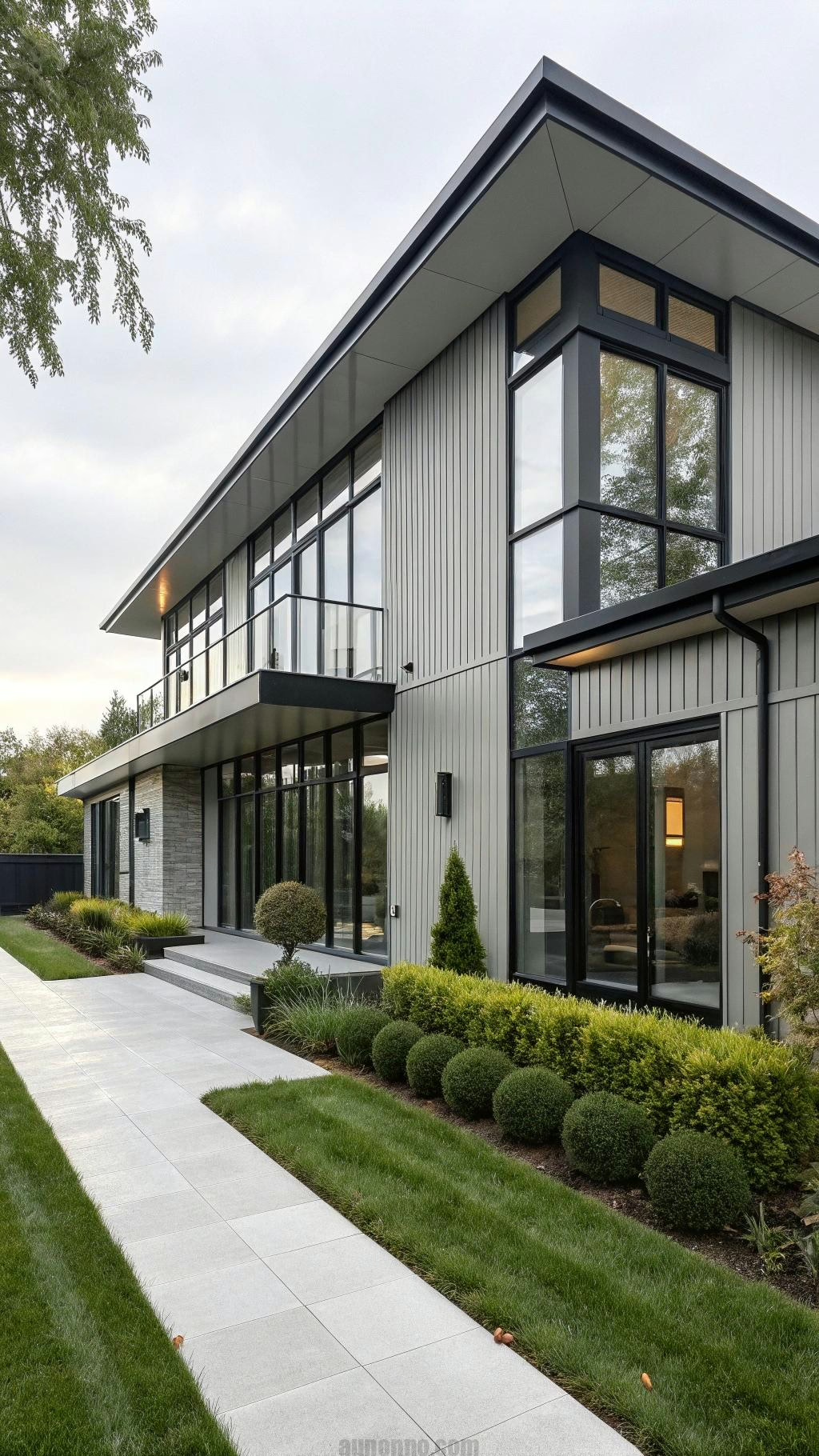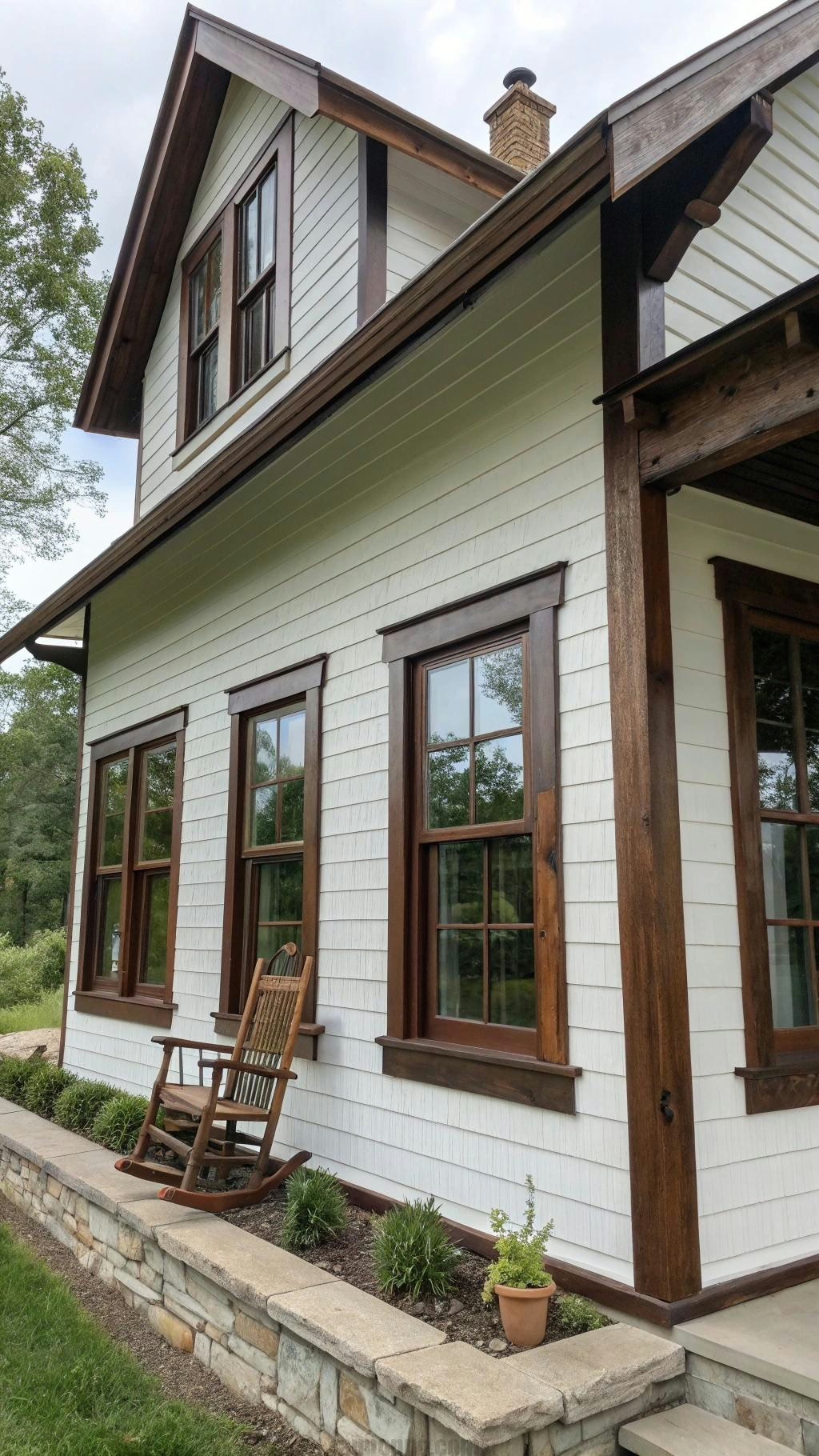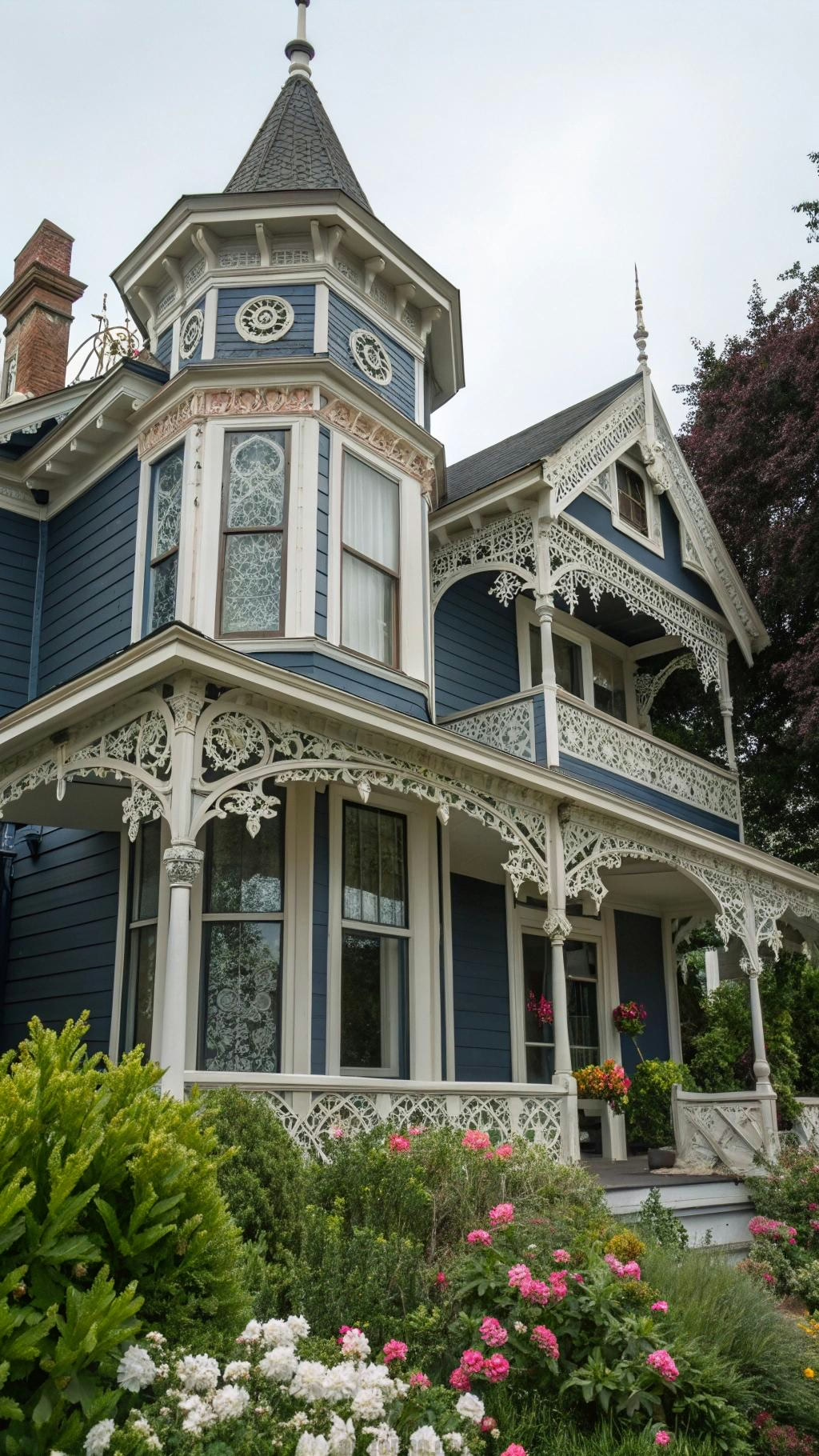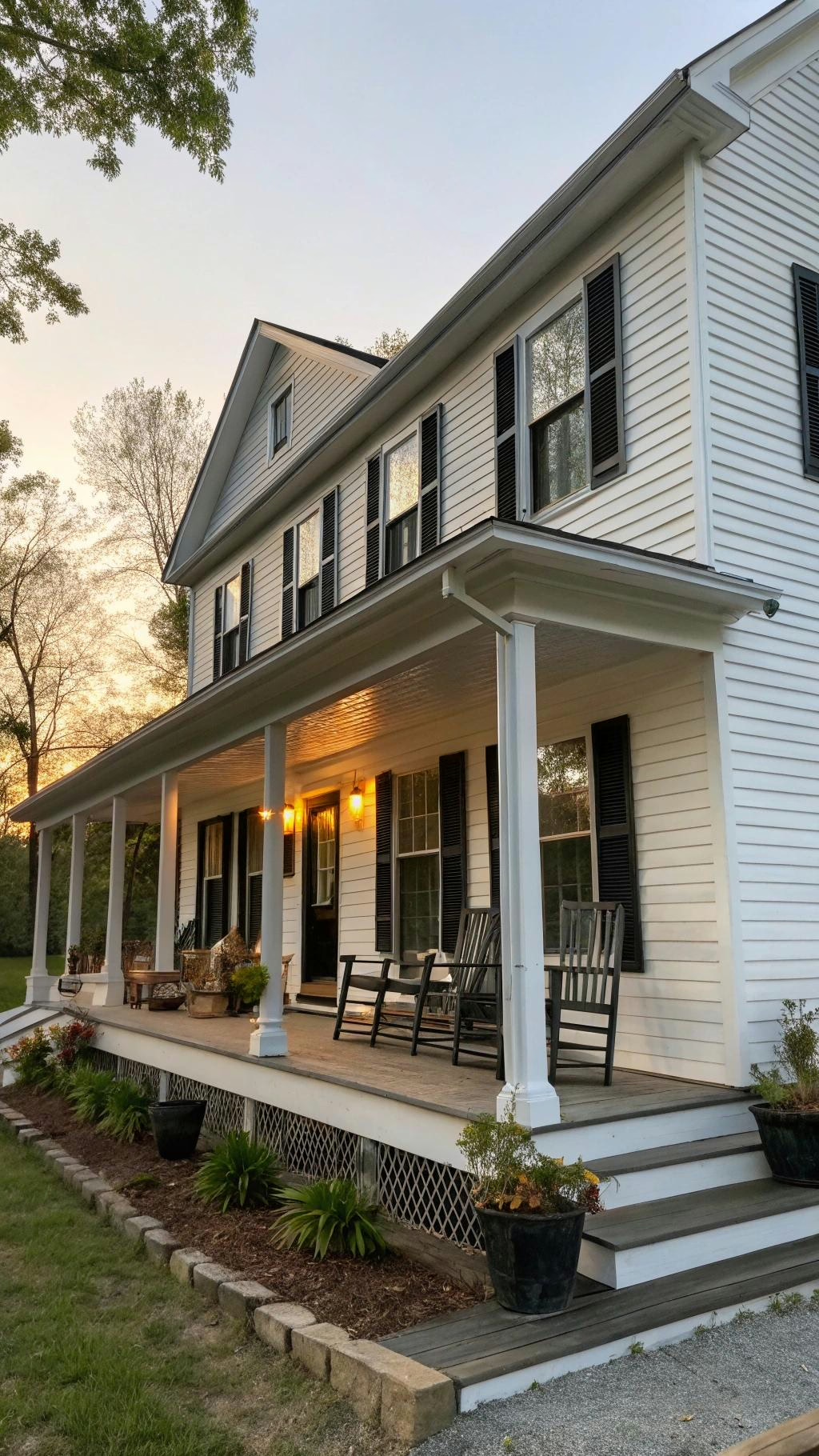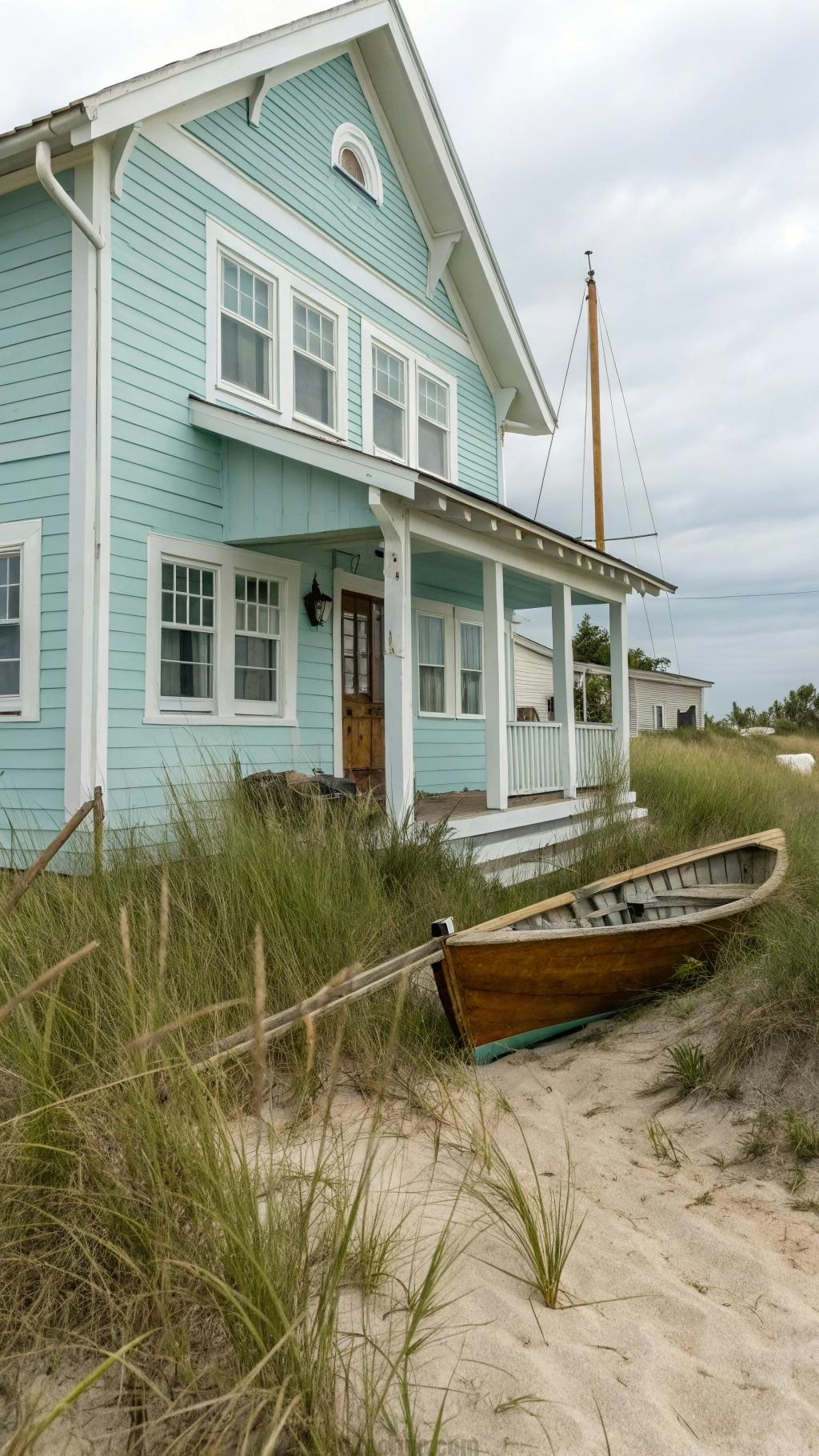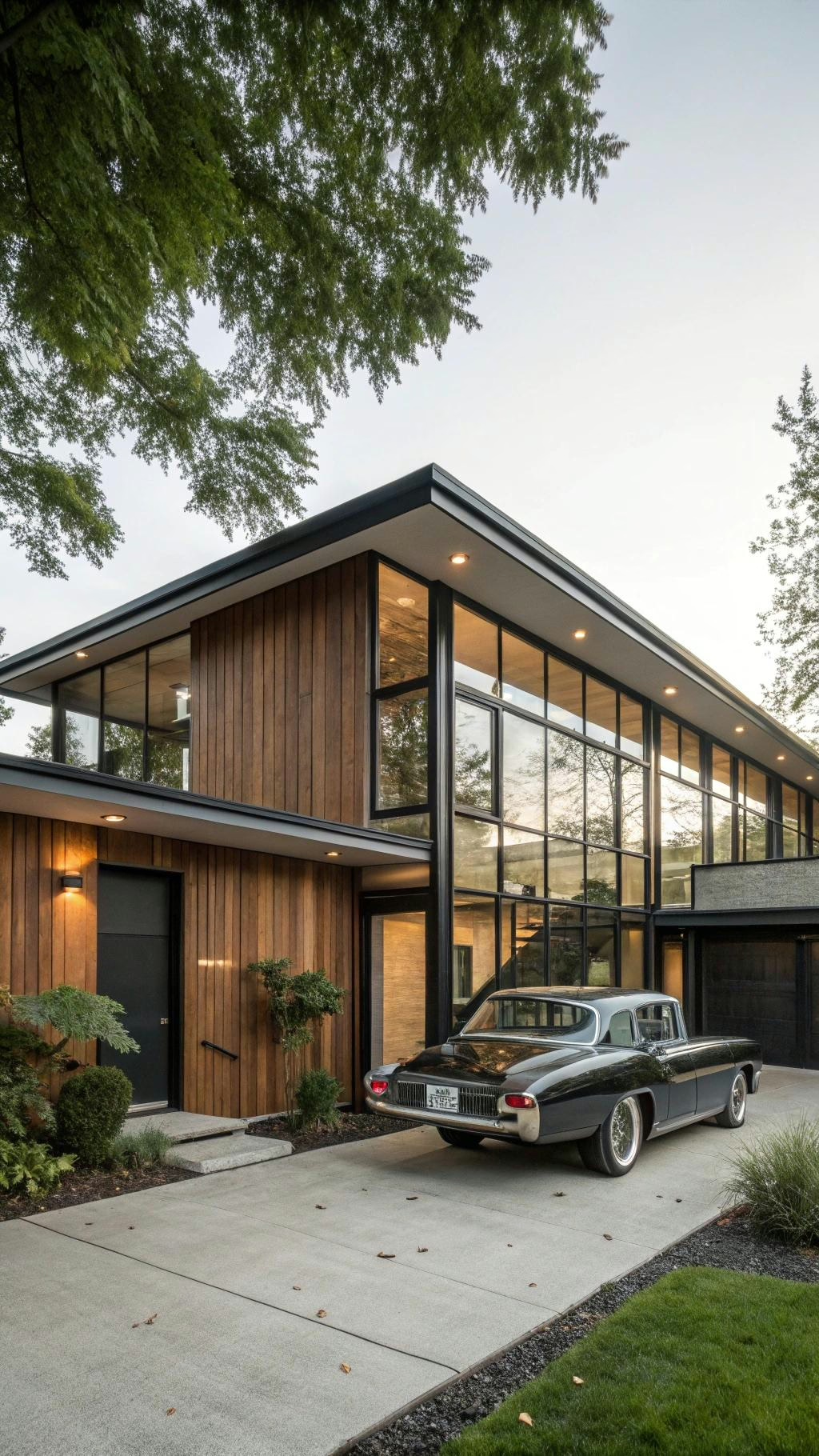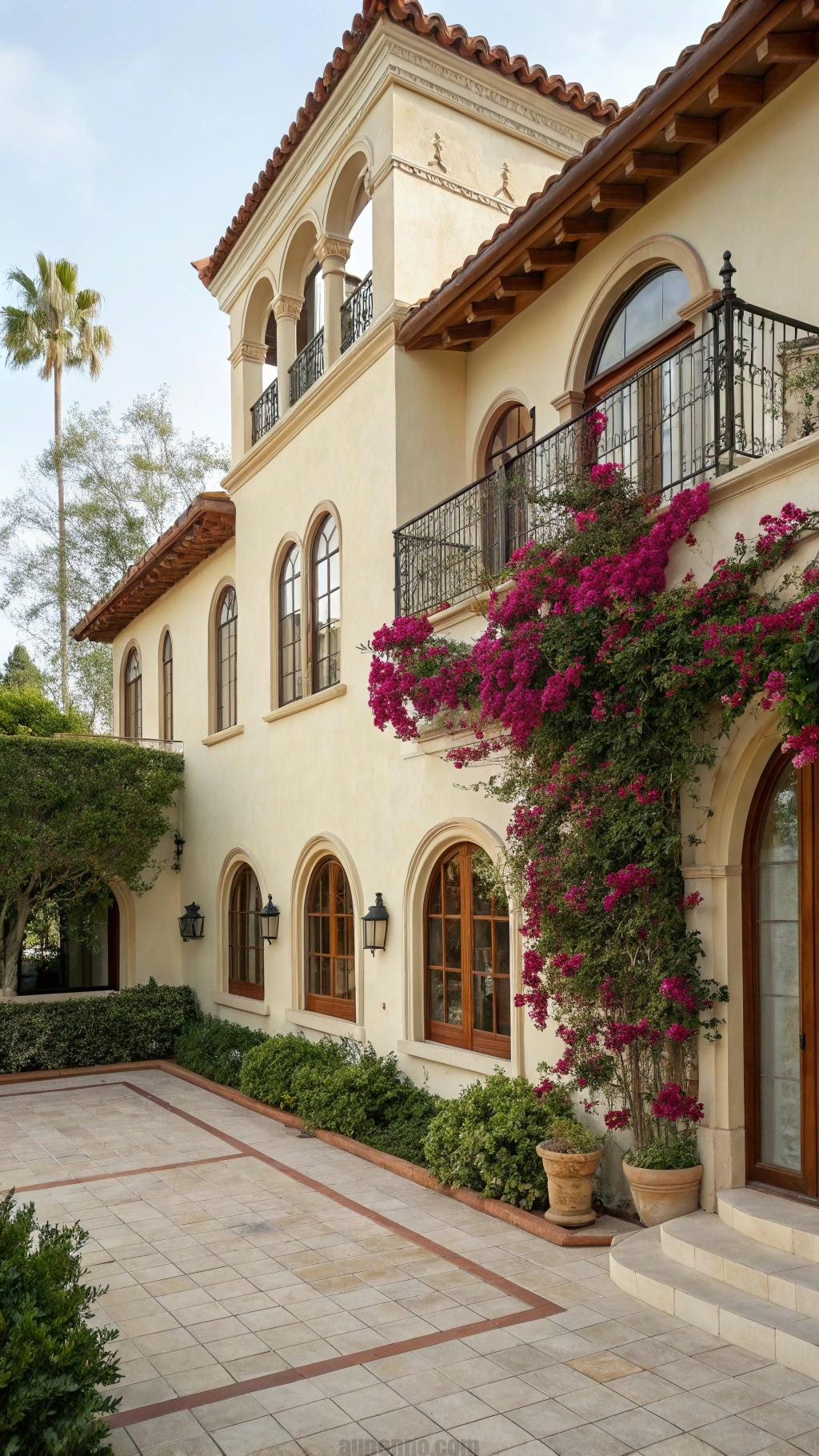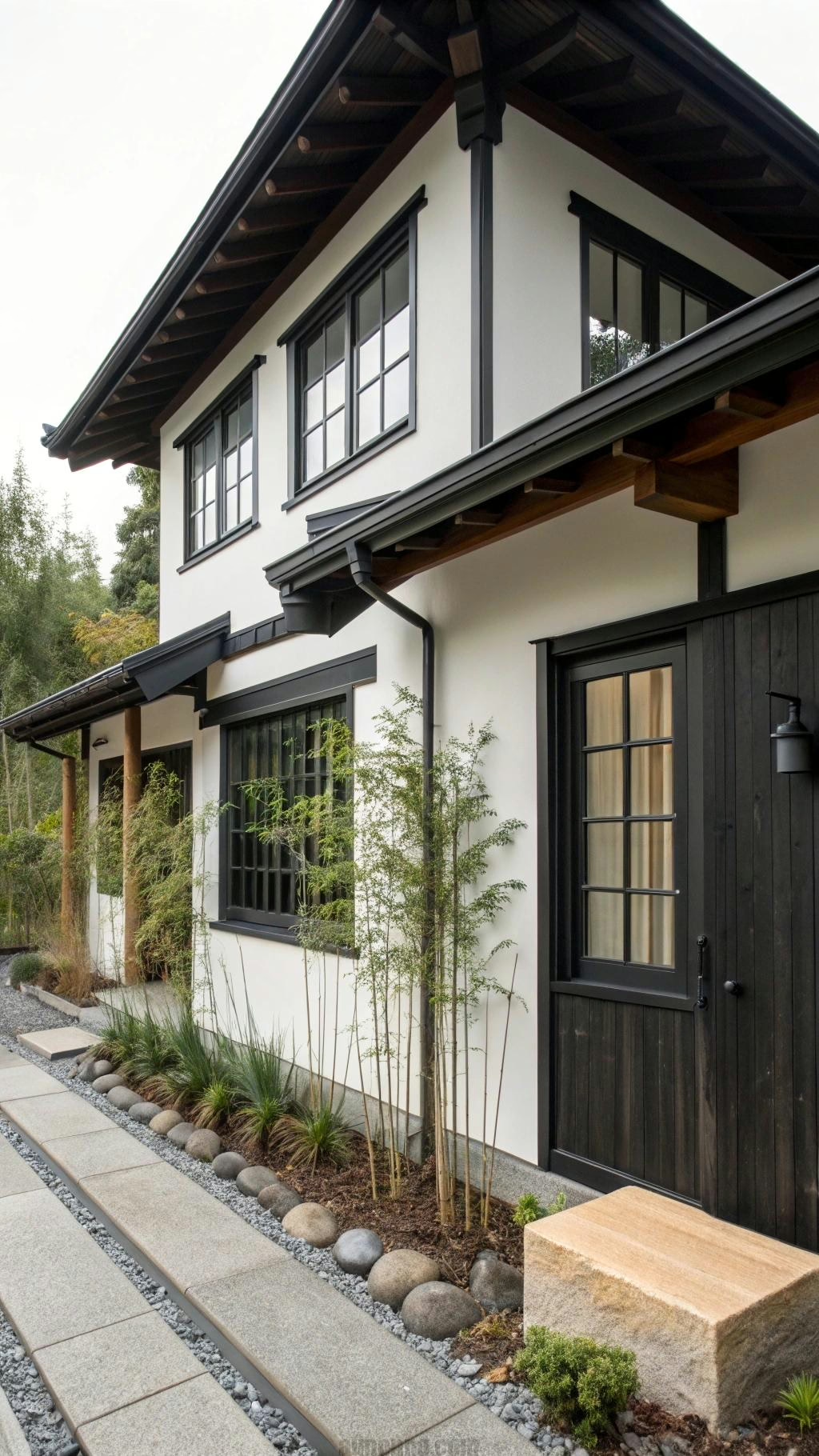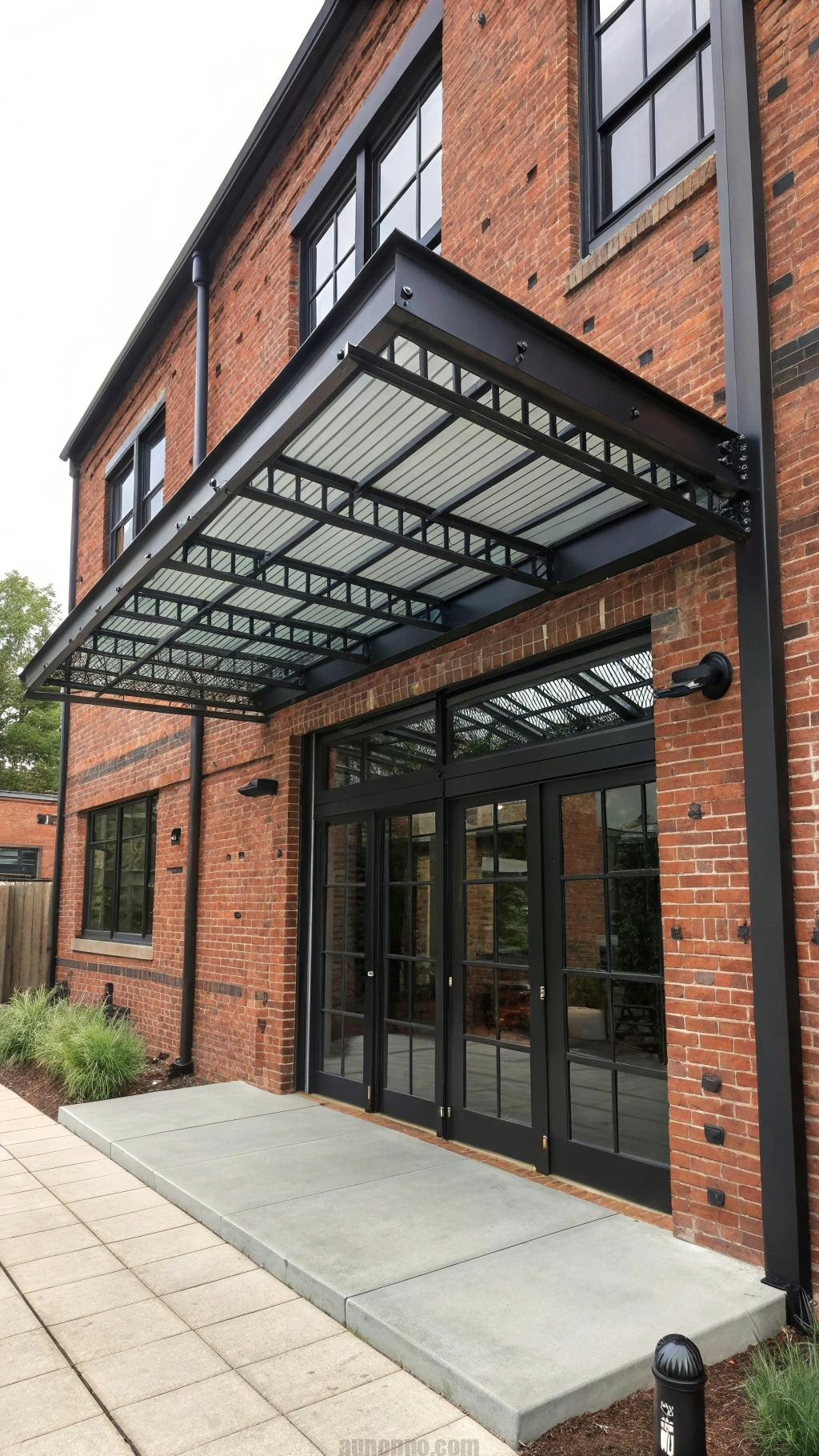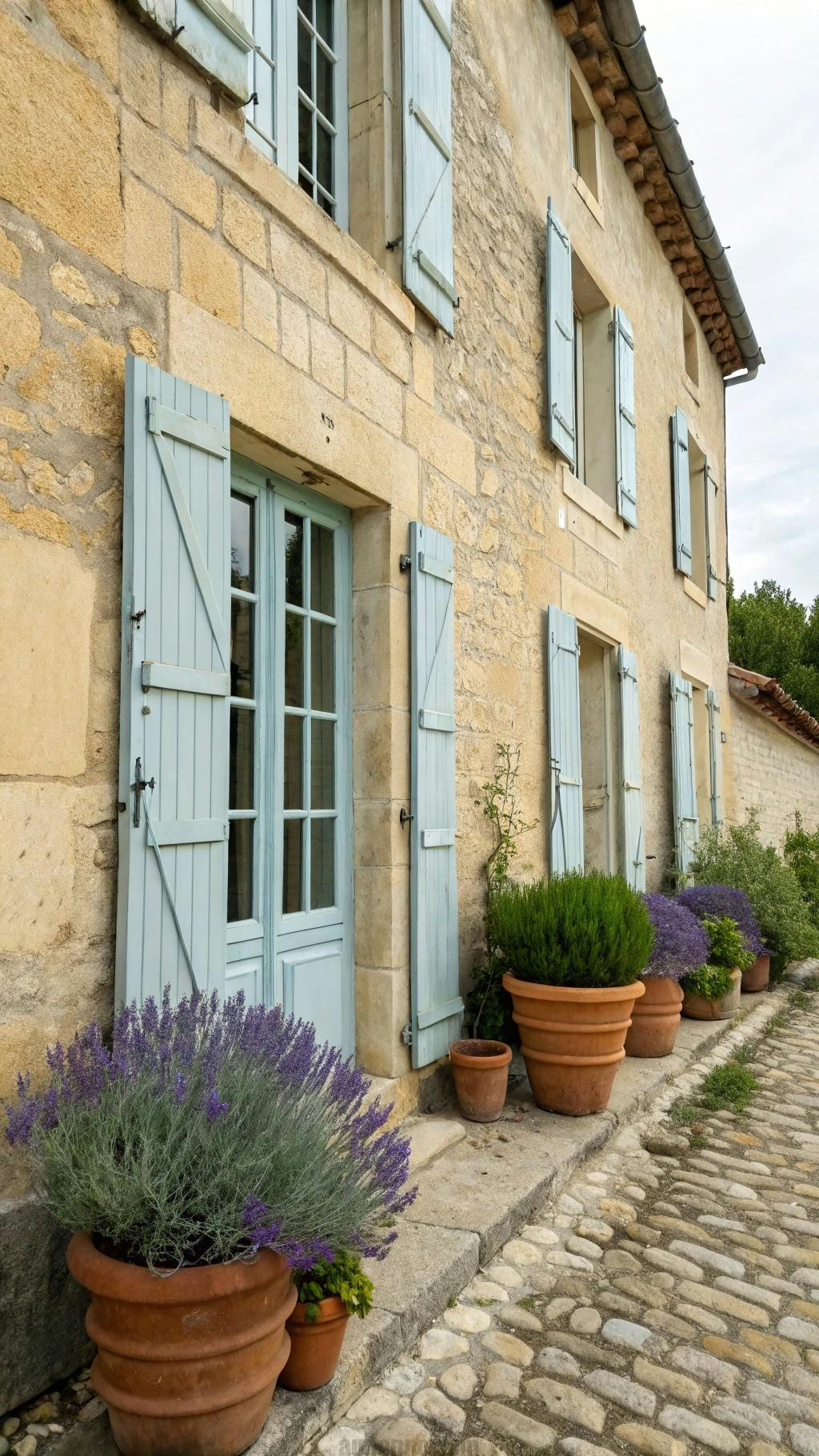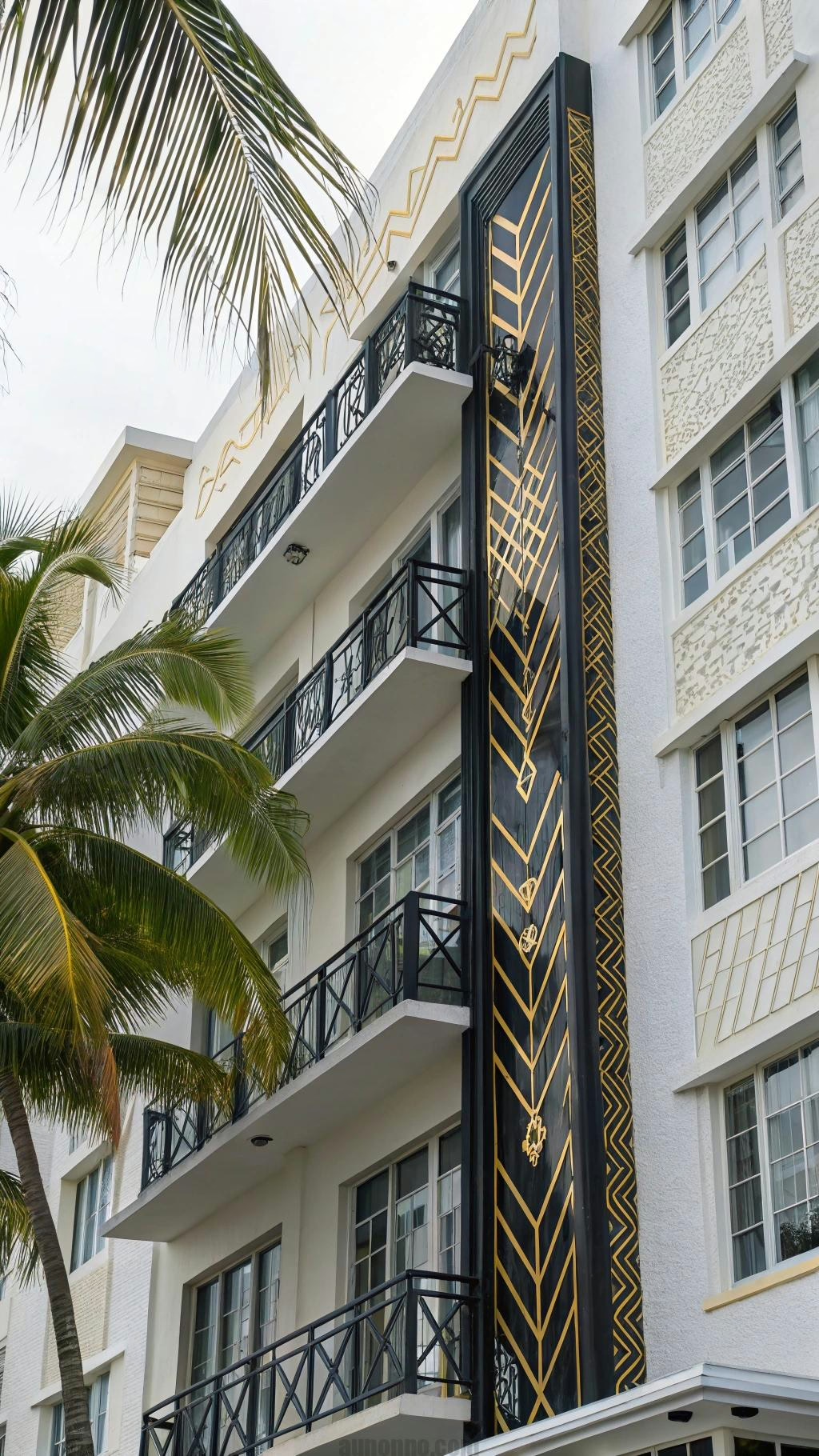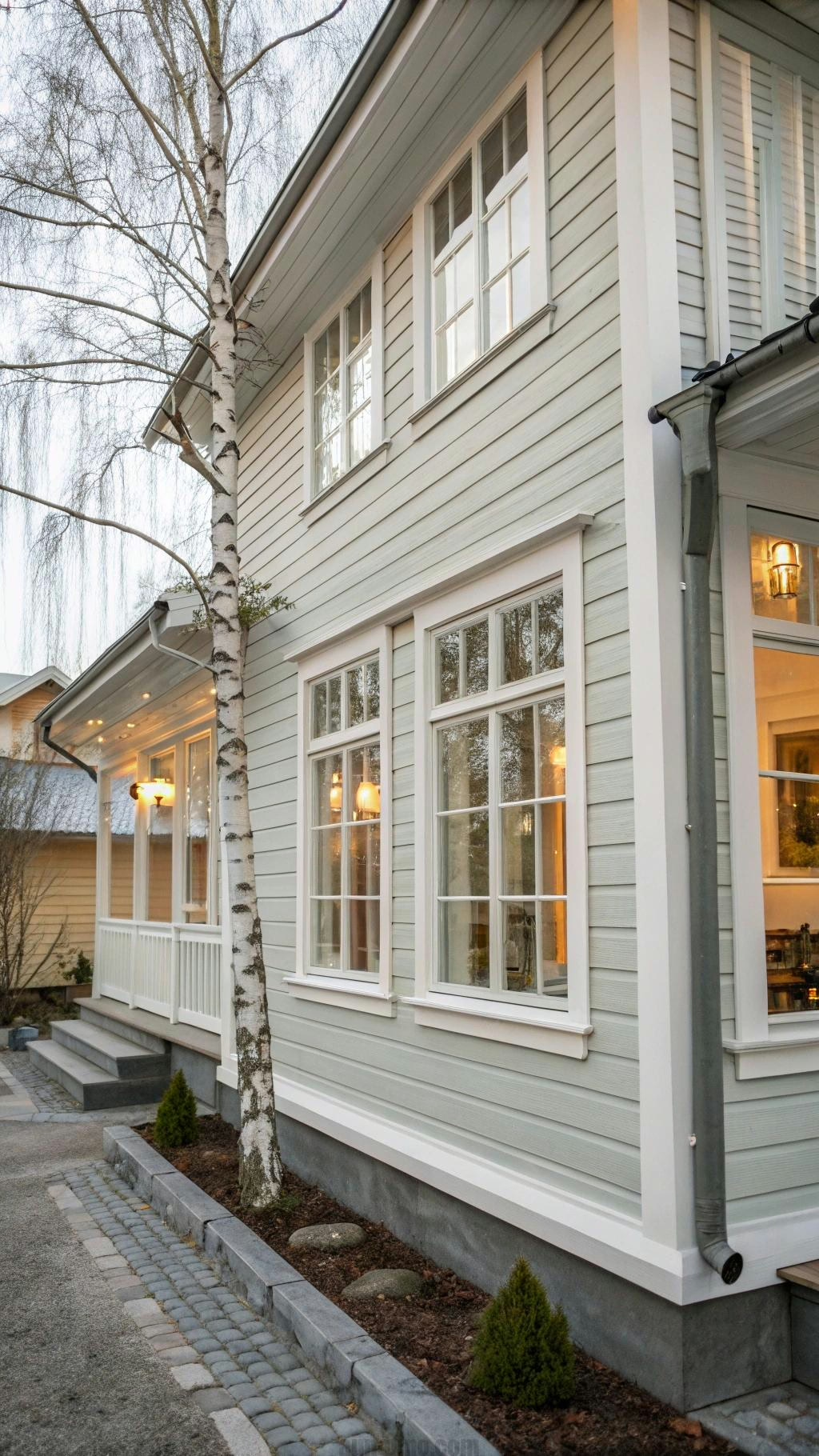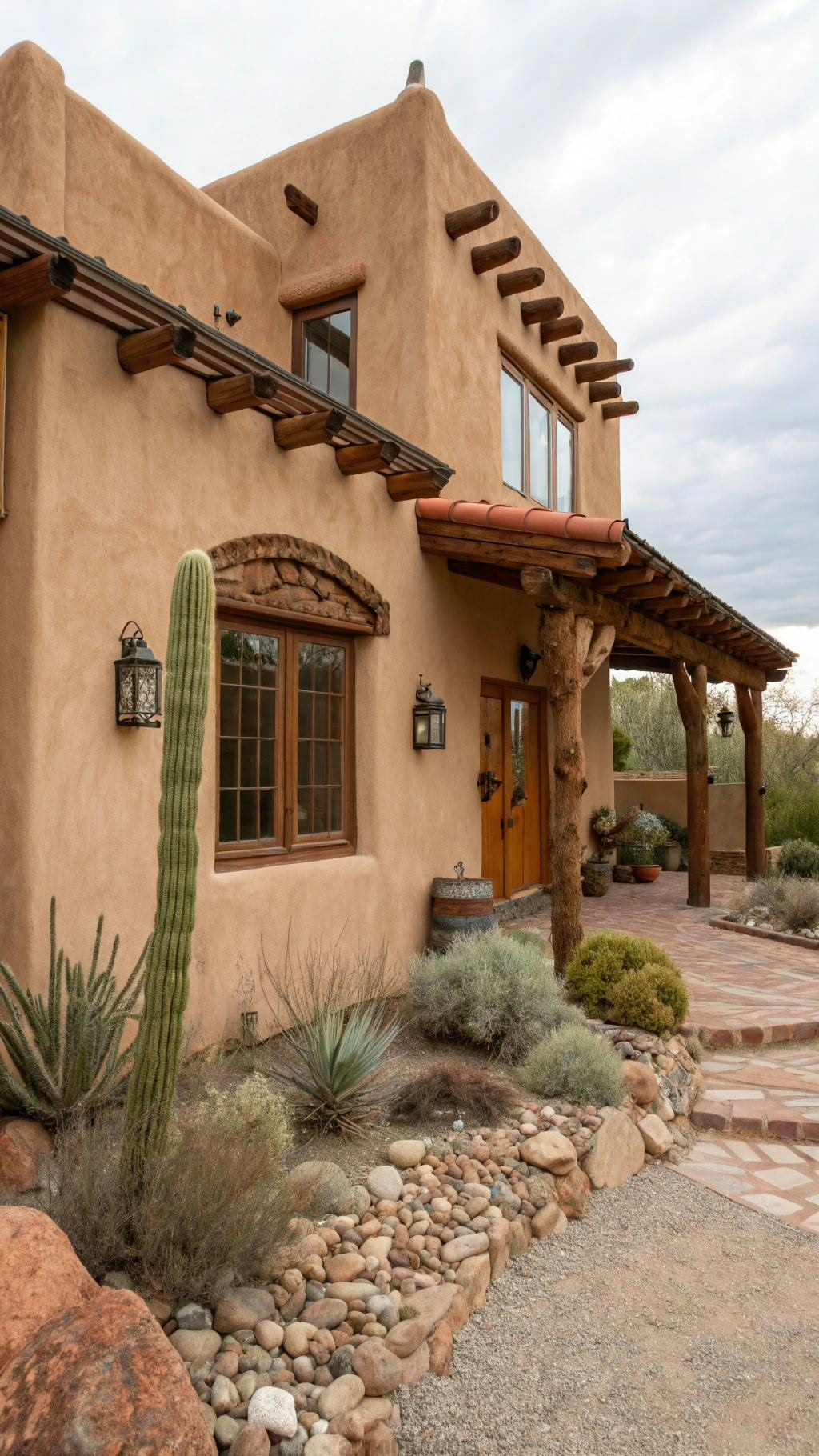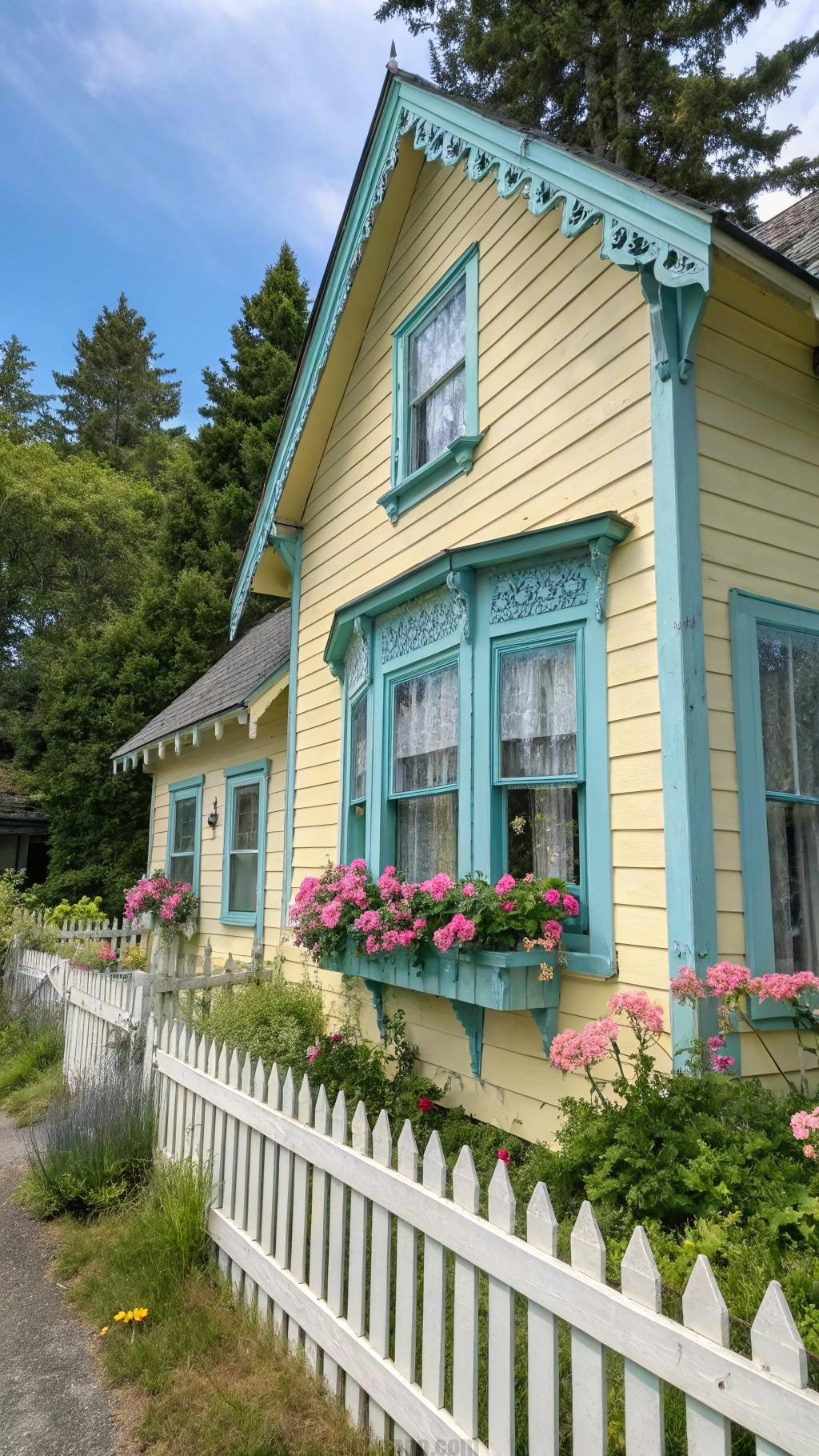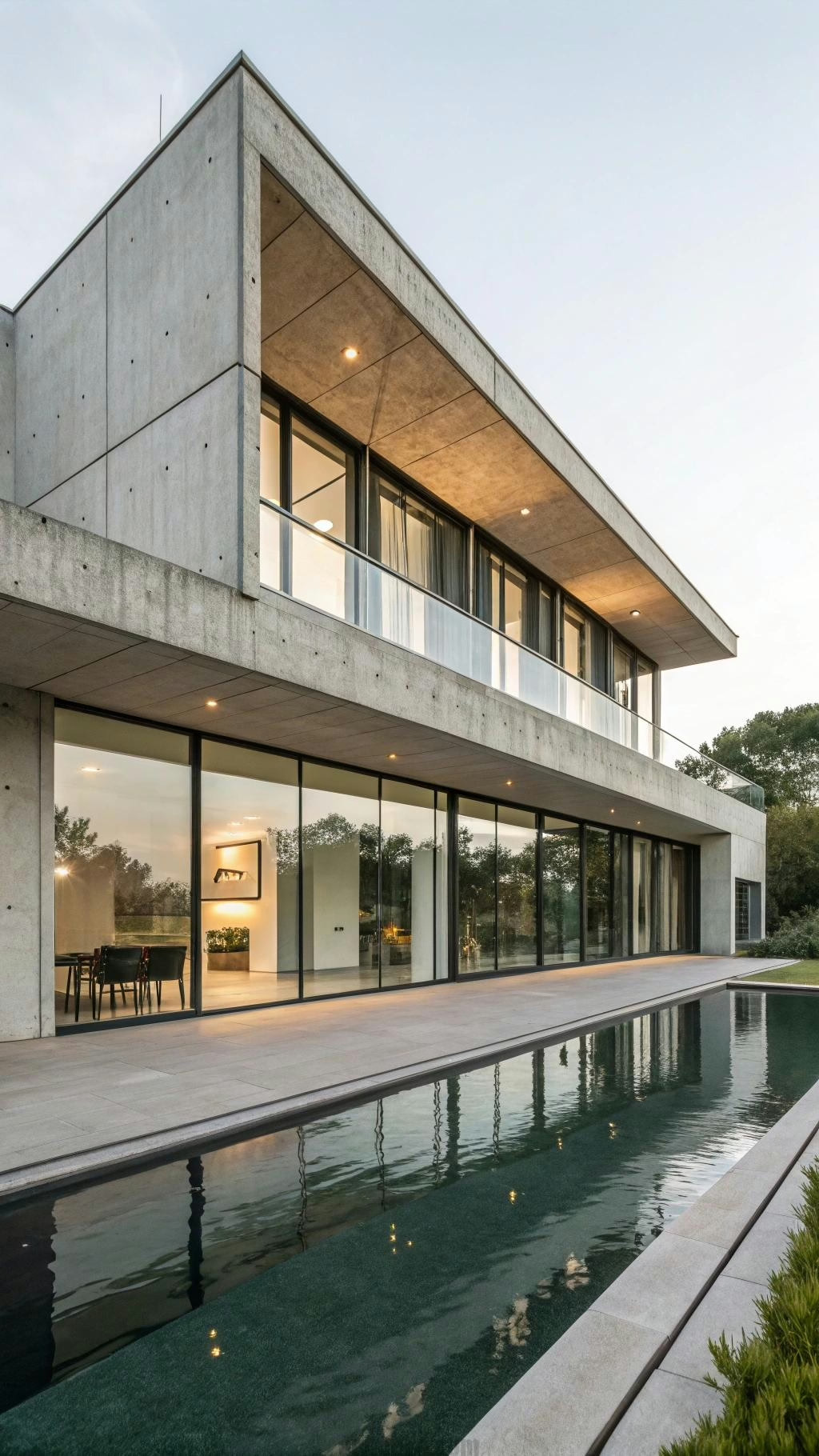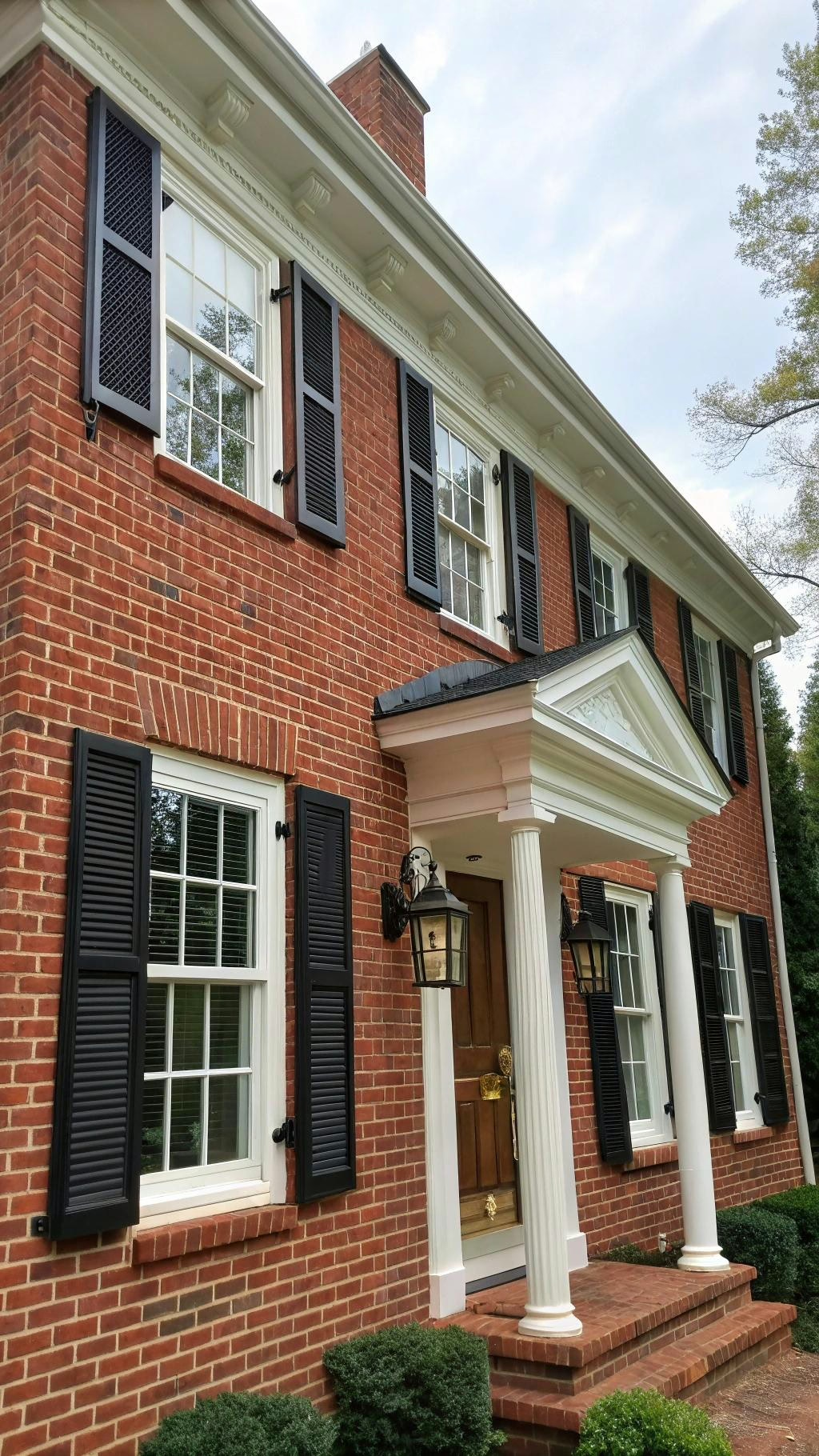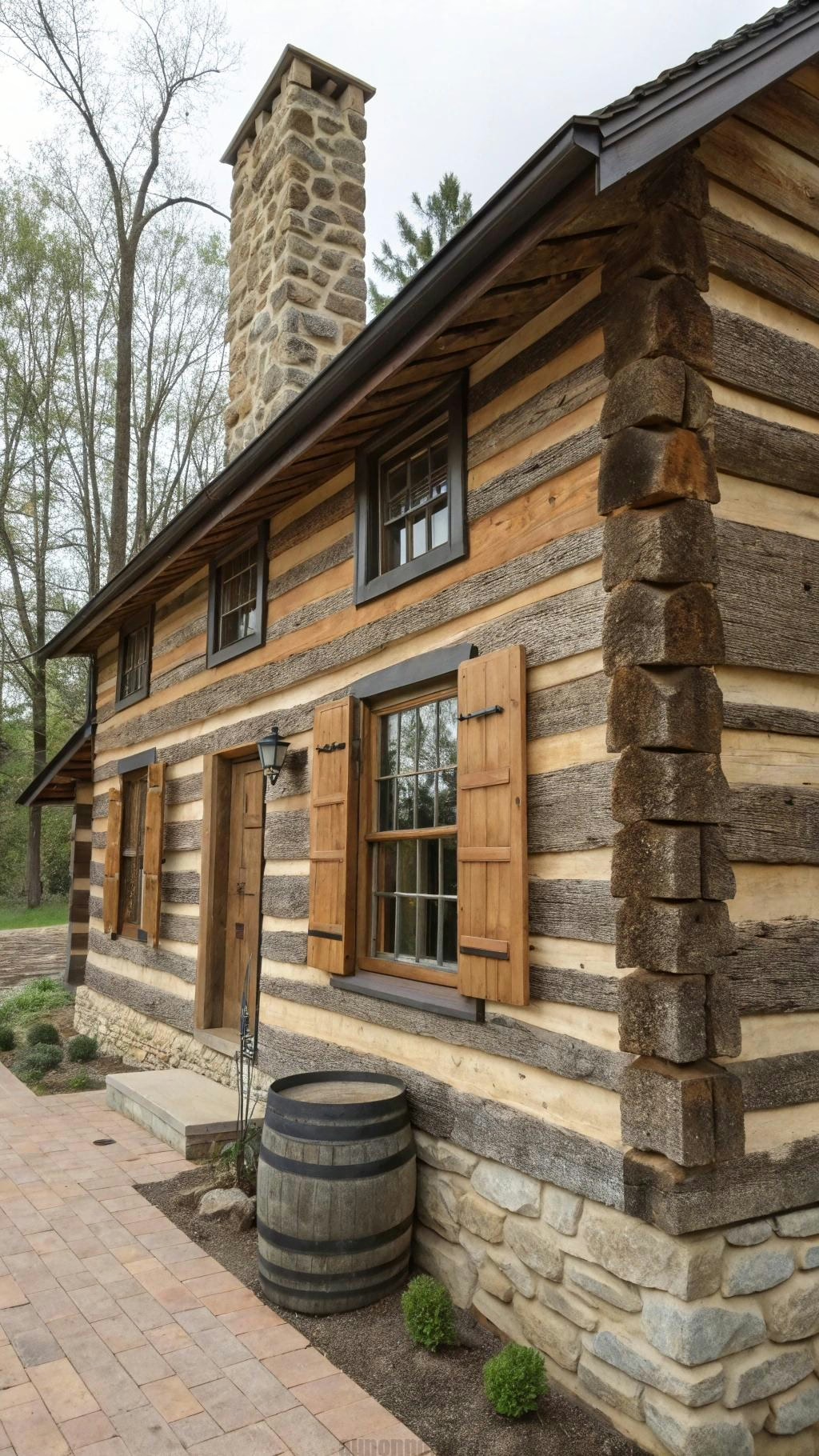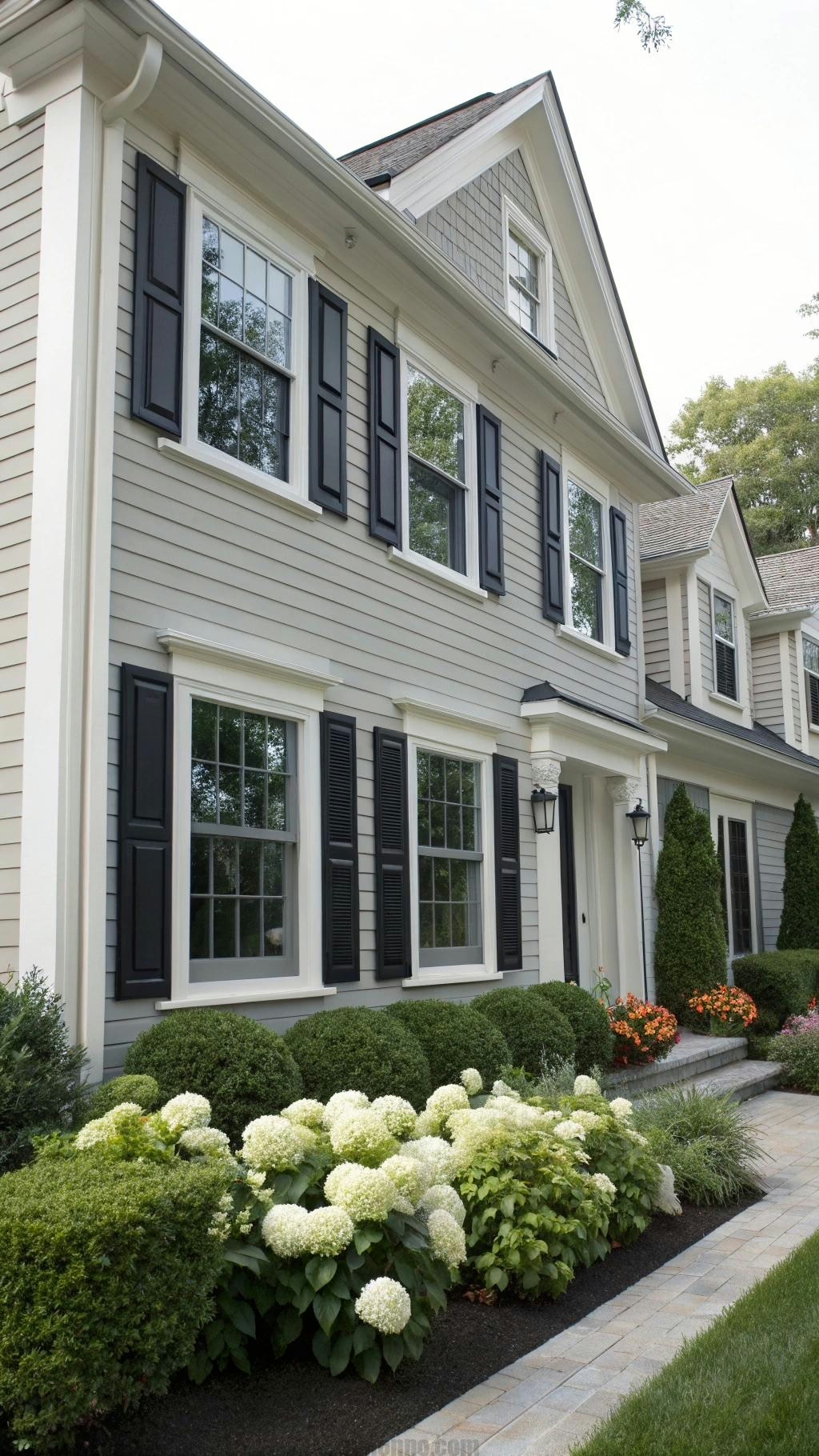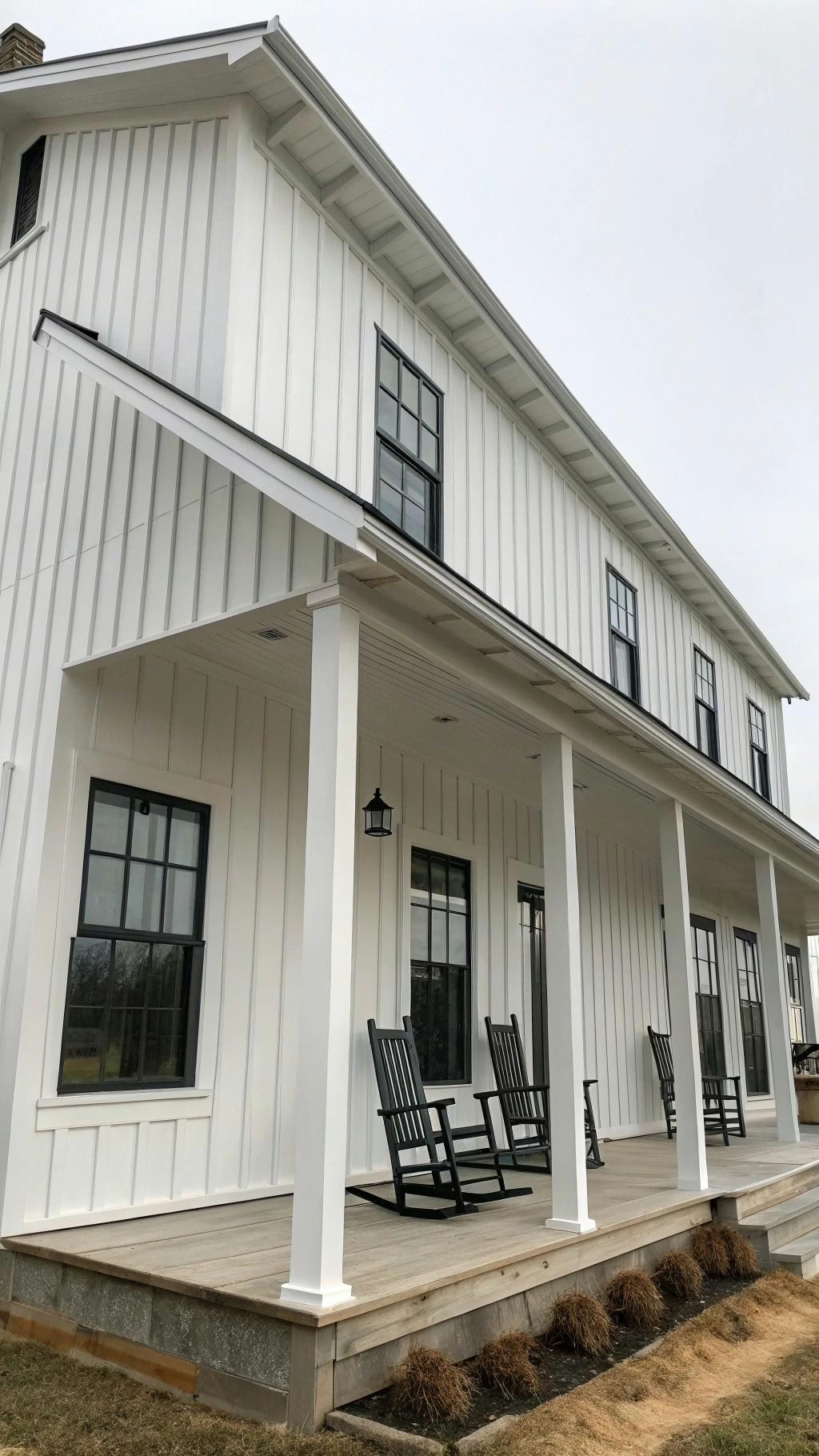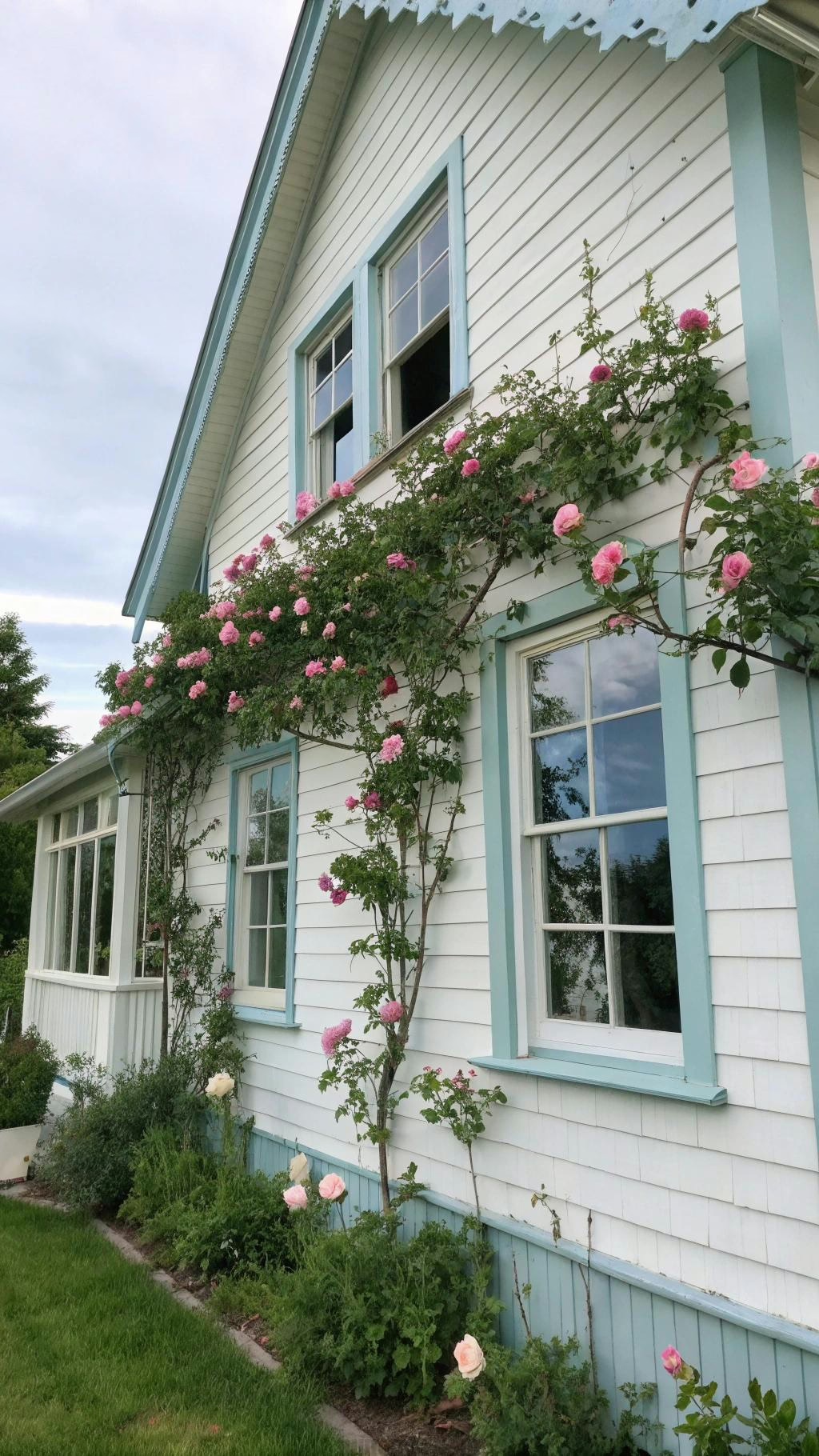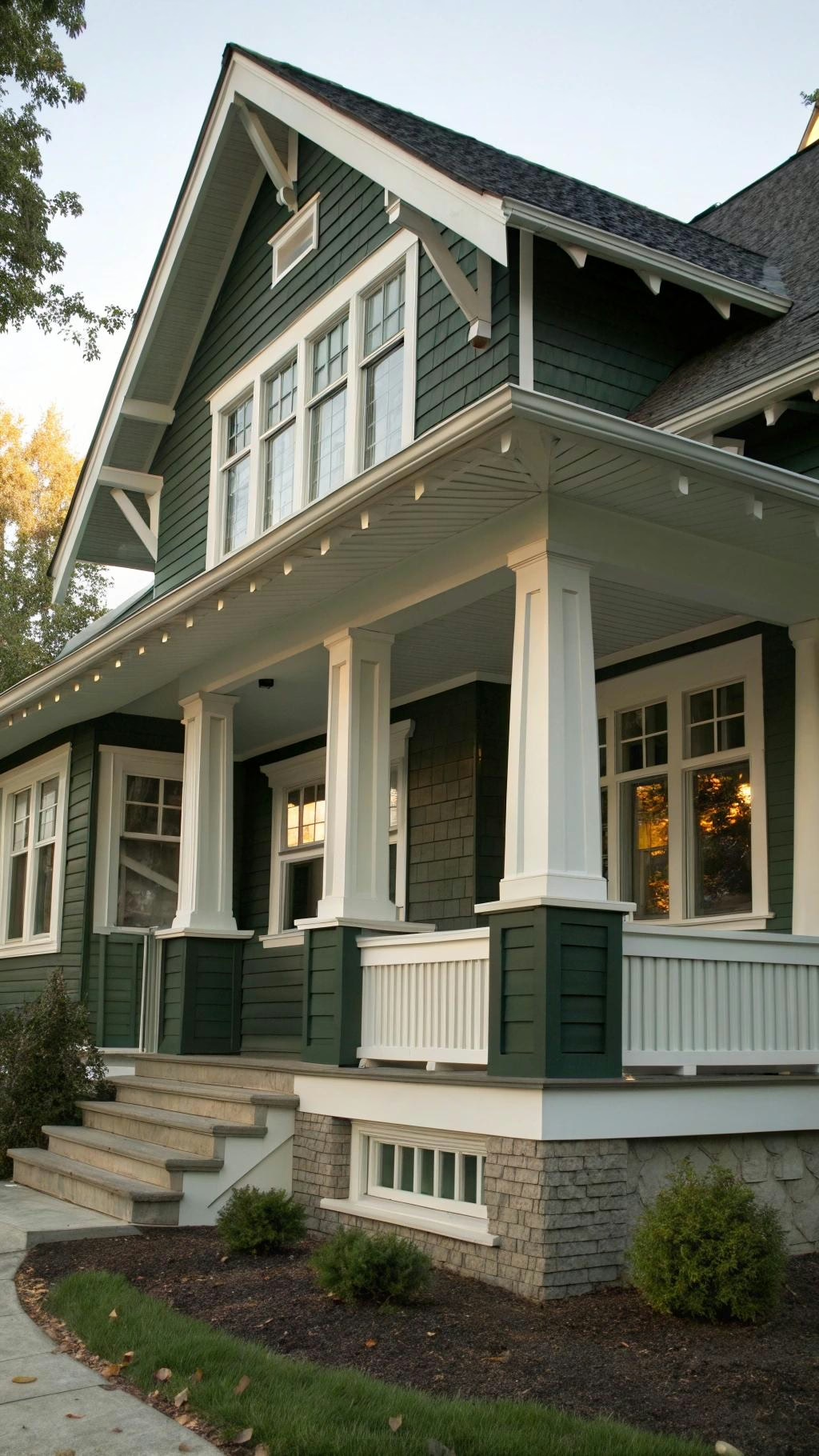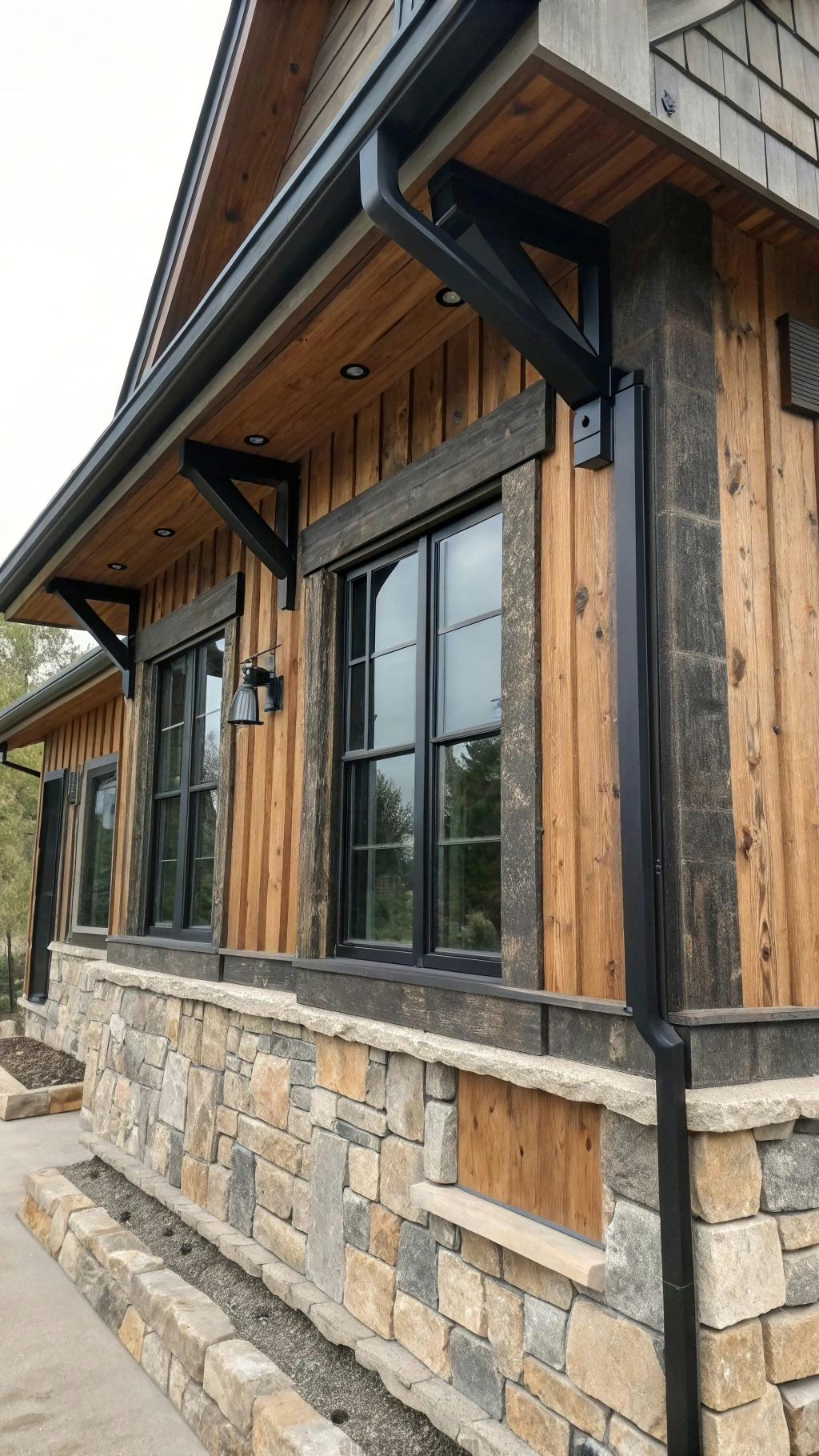Exterior window trim molding adds character and style to your home. The right design enhances architectural details and boosts curb appeal. Whether you prefer classic or modern looks, these ideas will inspire your next project.
Classic Colonial Trim
Colonial-style window trim features clean lines and simple elegance. This design uses thick, flat molding for a timeless look. It complements traditional homes beautifully.
White is the most common color for colonial trim. The contrast against brick or siding creates a crisp appearance. This style works well with symmetrical window layouts.
Choose durable materials like PVC or wood for longevity. Colonial trim resists weathering with proper maintenance. It’s a low-maintenance option for homeowners.
For a refined touch, add a small lip or ledge at the top. This subtle detail enhances depth. The result is a polished, sophisticated exterior.
Craftsman-Style Window Casings
Craftsman trim emphasizes natural materials and handcrafted details. Thick, tapered wood casings give a sturdy, artisanal look. This style suits bungalows and rustic homes.
Stained wood trim adds warmth to the exterior. Earthy tones like cedar or mahogany enhance the natural aesthetic. Pair it with stone accents for extra texture.
Wide, flat boards create a bold frame around windows. The simplicity highlights craftsmanship. This design works well with double-hung windows.
For authenticity, incorporate decorative corbels or brackets. These small touches elevate the trim. The overall effect is cozy and inviting.
Modern Minimalist Trim
Modern trim focuses on sleek, thin profiles. Metal or composite materials give a streamlined appearance. This style suits contemporary and industrial homes.
Black or gray trim creates a striking contrast. The sharp lines emphasize geometric shapes. Large windows benefit from this understated framing.
Minimalist trim avoids excessive detailing. The simplicity enhances the home’s architecture. This design pairs well with neutral-colored siding.
For a cohesive look, match the trim to other exterior elements. Door frames and railings should follow the same style. The result is a clean, unified aesthetic.
Rustic Wood Trim with Beveled Edges
Rustic wood trim brings natural warmth to your home’s exterior. Beveled edges add subtle dimension for a handcrafted look. This style works well with cabins, farmhouses, and cottage-style homes.
Reclaimed wood adds character with its weathered texture. Staining instead of painting preserves the wood’s organic appeal. Pair it with stone or brick for a cozy, earthy aesthetic.
For durability, use cedar or redwood, which resist rot. A protective sealant prevents moisture damage. This trim ages beautifully, gaining a rich patina over time.
Consider adding corner brackets for extra charm. These small details reinforce the rustic theme. The result is a welcoming, timeless exterior.
Victorian Ornamental Trim
Victorian trim is elaborate, featuring intricate carvings and layered profiles. This style suits historic homes or those with Gothic, Queen Anne, or Italianate architecture. The dramatic details make windows stand out.
Decorative elements like scrollwork, rosettes, and dentil molding add elegance. Paint in contrasting colors (e.g., cream with deep green) for a striking effect. This trim demands attention and enhances curb appeal.
Since Victorian trim is complex, fiberglass or polyurethane options mimic wood without maintenance. These materials resist warping and insects. Restoring original wood trim is also an option for period homes.
For authenticity, match the trim to other exterior millwork. Porch columns and gables should follow the same ornate style. The result is a grand, cohesive facade.
Farmhouse Simplicity with Wide Boards
Farmhouse-style trim uses wide, flat boards for a sturdy, no-fuss look. This design is practical yet charming, fitting modern farmhouse and country-style homes. The simplicity highlights the windows without distraction.
White or soft gray trim keeps the aesthetic clean. Black hardware (like hinges or shutter hooks) adds subtle contrast. This style works well with board-and-batten or lap siding.
Pine or poplar is cost-effective for this look. Seal the wood properly to prevent weathering. For a low-maintenance option, use PVC trim that mimics wood grain.
Add a thin backband molding for slight depth. This small detail prevents the trim from looking too plain. The overall effect is fresh and inviting.
Coastal-Inspired Trim with Rounded Corners
Coastal trim features soft, rounded edges for a relaxed vibe. This style suits beach cottages, Cape Cod homes, and coastal modern designs. The curves prevent a harsh, angular look.
Light colors like seafoam green, pale blue, or white keep the aesthetic airy. The trim should complement the home’s exterior without overpowering it. Weathered wood or composite materials enhance the beachy feel.
Nautical details like rope molding or porthole-style windows reinforce the theme. These touches add personality without being kitschy. The goal is breezy elegance.
For durability in salty air, use marine-grade materials. Fiber cement or PVC resists moisture and fading. The result is a low-maintenance, vacation-ready exterior.
Mid-Century Modern Thin Metal Trim
Mid-century modern trim uses slender metal frames for a sleek, retro look. This style pairs perfectly with homes featuring large glass panes and open designs. The minimalist approach emphasizes function and form.
Black or bronze metal trim creates a striking contrast. It works well with natural wood siding or stucco. The clean lines reflect the mid-century emphasis on simplicity.
Aluminum or steel are common materials for this style. They resist rust and require little upkeep. For authenticity, opt for trim with visible rivets or welded seams.
Match the trim to other metal accents, like railings or light fixtures. Consistency reinforces the design era. The result is a timeless, atomic-age aesthetic.
Mediterranean Arched Window Trim
Mediterranean-style trim features graceful arches and warm, earthy tones. This design complements stucco homes, villas, and Spanish-inspired architecture. The curved tops add Old World charm.
Terracotta or cream-colored trim blends seamlessly with rustic exteriors. Wrought iron accents enhance the European flair. This style works well with courtyards and tile roofs.
For durability, use stone or polyurethane materials that mimic hand-carved details. These options resist cracking in hot climates. The texture should feel organic, not overly polished.
Add decorative keystones at the top of arches for authenticity. These small touches elevate the design. The result is a sunbaked, romantic aesthetic.
Asian-Inspired Minimalist Trim
Asian-inspired trim focuses on clean lines and natural materials. This style suits modern Zen homes and Japanese-inspired architecture. The simplicity creates harmony with nature.
Dark-stained wood or black trim provides striking contrast against light walls. The frames are typically thin and understated. Sliding shoji-style screens can complement the windows.
Teak or cedar are ideal wood choices for longevity. The natural grain should remain visible. For low maintenance, consider composite materials with wood-look finishes.
Incorporate small roof overhangs above windows for subtle shading. These functional details enhance the aesthetic. The overall effect is peaceful and balanced.
Gothic Revival Pointed Arch Trim
Gothic Revival trim features dramatic pointed arches and intricate tracery. This style suits churches, historic homes, and castle-like residences. The vertical lines create a soaring effect.
Carved stone or wood trim adds authenticity to the design. Dark stained oak or gray stone are traditional choices. Leaded glass windows complete the medieval look.
For modern applications, fiberglass or GFRP (glass fiber reinforced polymer) mimics stone details. These materials are lightweight yet durable. They resist weathering better than natural stone.
Add quatrefoil or trefoil cutouts in the trim for extra detail. These symbolic shapes reinforce the Gothic theme. The result is a majestic, timeless facade.
Industrial Steel-Frame Trim
Industrial trim uses exposed steel frames for a raw, urban look. This style suits lofts, modern warehouses, and contemporary homes. The metal construction emphasizes strength and simplicity.
Black or galvanized steel provides an unfinished, utilitarian aesthetic. The trim can be welded onsite for custom fits. Large factory-style windows work best with this approach.
For insulation, thermal breaks can be added to prevent condensation. Powder-coated finishes resist rust and fading. The hardware should remain visible for authenticity.
Pair with brick walls or concrete siding for full industrial effect. Exposed bolts and rivets add character. The result is a bold, no-nonsense exterior.
French Countryside Trim with Shutters
French countryside trim features slightly distressed wood and soft colors. This style suits cottages, vineyards, and rural estates. The look is elegant yet relaxed.
Weathered blue-gray or cream trim pairs well with stone walls. Wooden shutters add movable charm. The proportions are balanced but not perfectly symmetrical.
Reclaimed oak or pine develops a natural patina over time. For easier upkeep, use pre-distressed composite materials. The finish should look sun-bleached and timeworn.
Add flower boxes beneath windows for a Provençal touch. Climbing roses or ivy enhance the romance. The result is a picturesque, storybook exterior.
Art Deco Geometric Trim
Art Deco trim features bold zigzags, chevrons, and stepped designs. This style suits 1920s-era homes and modern interpretations. The angular patterns create visual energy.
High-contrast colors like black-and-gold or navy-and-silver emphasize the geometry. Chrome or lacquered finishes add glamour. The trim should feel luxurious but not excessive.
Fiberglass or molded urethane replicates intricate Deco patterns. These materials won’t warp or crack. For authenticity, study historic Miami Beach examples.
Extend the trim design to doorways and railings. Consistency is key to the style. The result is a dynamic, Jazz Age exterior.
Scandinavian Slim Wood Trim
Scandinavian design embraces light, natural wood tones and minimalist shapes. This trim style uses narrow, clean-lined frames that let windows take center stage. The look is fresh and uncluttered.
Pale woods like ash or pine keep the aesthetic airy and bright. White trim also works for that classic Nordic feel. The simplicity pairs perfectly with black-framed windows for contrast.
For durability, thermally-treated wood resists warping in cold climates. A matte protective sealant prevents yellowing over time. The goal is natural beauty without high maintenance.
Add subtle chamfered edges for a touch of dimension. This slight detail prevents the trim from looking flat. The result is cozy yet crisp curb appeal.
Southwestern Adobe-Style Trim
Southwestern trim features thick, rounded edges that mimic traditional adobe architecture. This style suits desert homes and Pueblo Revival designs. The earthy look blends with the landscape.
Warm terracotta or sandy beige colors complement the natural surroundings. The trim should look hand-formed rather than perfectly precise. Rough textures add authentic character.
For modern homes, fiber cement provides the adobe look without maintenance. Real adobe requires regular re-mudding to maintain. Either way, the organic feel is key.
Integrate vigas (exposed wood beams) above windows when possible. These extend the Southwestern aesthetic. The result is a sun-baked, welcoming exterior.
Cottage-Style Painted Trim
Cottage trim is all about playful colors and charming details. This style suits storybook homes and coastal retreats. The look is intentionally imperfect and inviting.
Buttery yellows, soft greens or robin’s egg blue make cheerful trim colors. Different windows can have different hues for extra whimsy. The paint should look slightly worn, not glossy new.
Wood is the best material for this style since it takes paint well. Cedar holds up better than pine in damp climates. Regular touch-ups maintain the lived-in charm.
Add flower box brackets or tiny scalloped edges for sweetness. These details enhance the fairy-tale quality. The result is a home that looks loved and lived-in.
Ultra-Modern Flush Trim
Ultra-modern trim disappears into the wall for a seamless look. This style suits contemporary and futuristic home designs. The windows appear to float without visible framing.
The trim is the same color and material as the surrounding wall. Hidden fasteners maintain the clean lines. This approach works best with metal-clad or concrete homes.
Thermal breaks are crucial to prevent condensation issues. The installation must be perfectly precise. Any misalignment ruins the illusion.
Pair with expansive glass for maximum effect. The lack of visible trim emphasizes the architecture. The result is sleek, cutting-edge curb appeal.
Traditional Brickmould Trim
Brickmould trim is a classic choice for colonial and traditional homes. This simple, versatile style frames windows with a slight outward slope. The design has stood the test of time.
White PVC brickmould offers durability and low maintenance. Stained wood versions provide warmth against brick exteriors. The proportions should be substantial but not overpowering.
This trim style easily accommodates storm windows or screens. The design works with both modern and historic homes. It’s a safe choice that always looks appropriate.
Add a small drip cap above each window for function and subtle detail. This prevents water damage while maintaining clean lines. The result is timeless, no-fuss elegance.
Rustic Log Cabin Notched Trim
Log cabin trim integrates seamlessly with the home’s log construction. The window frames are notched to fit snugly against rounded logs. This style is rugged and natural.
The trim should match the log species used in construction. Cedar, pine or fir are common choices. The wood grain should remain visible for authenticity.
Chinking (the mortar between logs) should continue around the window openings. This maintains the cabin’s weatherproofing. The look is intentionally rough-hewn.
Add wrought iron hardware for a frontier feel. Antique-looking latches and hinges enhance the rustic charm. The result is a cozy, backwoods retreat.
Transitional Two-Tone Trim
Transitional trim combines classic and contemporary elements for versatile appeal. This style features a two-tone approach with darker outer trim and lighter inner molding. The look bridges traditional and modern aesthetics seamlessly.
Use a matte black or charcoal gray for the outer frame. Pair it with bright white or warm beige for the inner layer. This creates depth while keeping the overall appearance clean. The combination works well with both brick and siding exteriors.
Medium-density fiberboard (MDF) holds paint beautifully for crisp color separation. For outdoor durability, choose PVC or fiber cement alternatives. Proper sealing prevents moisture damage between the layers.
Consider adding subtle shadow lines between the color zones. This architectural detail enhances the dimensional effect. The result is sophisticated yet approachable curb appeal.
Board-and-Batten Trim Integration
Board-and-batten trim extends the home’s vertical siding pattern around windows. This creates a cohesive, intentional look for rustic and farmhouse styles. The continuous lines draw the eye upward.
Match the trim width to your existing batten spacing for consistency. Typically 1×3 or 1×4 boards work well for framing. The material should be the same as your siding for seamless integration.
Pre-primed wood allows for easy painting to match siding. For low maintenance, fiber cement boards resist rot and insects. Leave a slight reveal between boards for authentic shadow lines.
Extend the battens slightly beyond the window frame for emphasis. This subtle protrusion adds depth and character. The result is a unified, architecturally interesting exterior.
Curved Corner Trim for Softness
Curved corner trim softens a home’s angular architecture with rounded edges. This style works particularly well for Mediterranean, cottage, and contemporary designs. The gentle curves create visual interest.
Radius corners require either custom woodworking or flexible molding materials. PVC and polyurethane options bend easily to create smooth arcs. For wood, steam-bending techniques achieve the desired shape.
Paint the curved trim in a contrasting color to highlight its shape. Soft pastels or warm neutrals maintain the approachable feel. Gloss finishes make the curves appear more pronounced.
Pair with arched windows or doorways to extend the theme. Consistent curves throughout the facade create harmony. The result is an inviting, organic aesthetic.
Recessed Shadow Box Trim
Recessed trim creates depth by setting windows back from the exterior wall. This shadow box effect adds architectural significance to any home. The style works particularly well for Craftsman and Prairie School designs.
The reveal should be 2-4 inches deep for proper shadow play. Use moisture-resistant materials for the recessed area. Fiber cement or PVC withstand the elements in this vulnerable position.
Paint the interior of the recess a darker color than the trim. This enhances the dimensional effect. Matte finishes prevent unwanted reflections that could diminish the shadows.
Consider adding integrated lighting in the recess. Subtle LED strips highlight the depth at night. The result is daytime dimension and evening ambiance.
Mixed-Material Trim Combinations
Combining materials creates unique, custom-looking window surrounds. Wood, metal, and stone can work together for dimensional interest. This approach allows for personalized expression.
Start with a primary material that matches your home’s dominant exterior. Then accent with a secondary material for contrast. For example: wood trim with metal corner caps or stone with wood sills.
Ensure all materials have compatible expansion rates. Use proper flashings between dissimilar materials. This prevents moisture issues and maintains structural integrity.
Keep the color palette limited to three materials maximum. Too many textures can look chaotic rather than intentional. The result is bespoke craftsmanship that stands out.
FAQ About Exterior Window Trim Molding Ideas
What material is best for exterior window trim?
PVC, fiber cement, and wood are popular choices. PVC is low-maintenance, while wood offers a classic look. Fiber cement resists rot and insects.
How do I choose the right trim color?
Match it to your home’s siding or create contrast. White and black are versatile options. Bold colors work for accent details.
Can I install trim molding myself?
Yes, with basic carpentry skills. Measure carefully and use weather-resistant materials. Professional installation ensures precision.
How often should exterior trim be painted?
Every 5-7 years, depending on material and climate. Inspect for peeling or cracking annually. Proper prep extends paint life.
What’s the average cost of window trim installation?
Costs range from $100-$300 per window. Custom designs or high-end materials increase the price. Labor varies by location.
Conclusion
Exterior window trim molding ideas can transform your home’s appearance. From classic to modern, the right design enhances curb appeal. Choose durable materials and styles that match your architecture.

